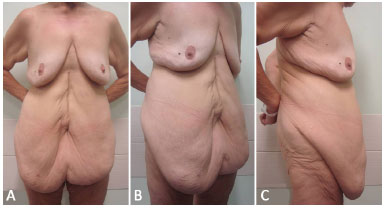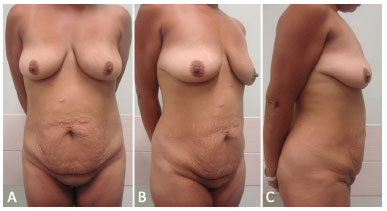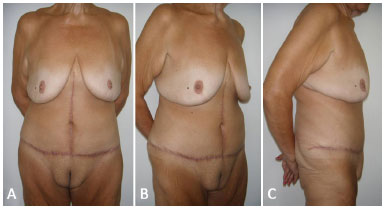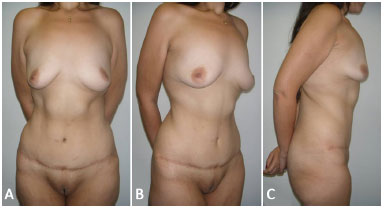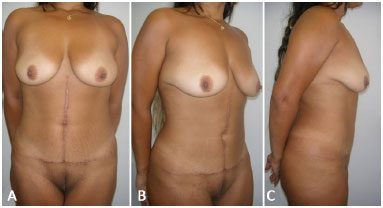ABSTRACT
INTRODUCTION: The abdomen is a critical region and is subjected to body contour deformity after significant weight loss. Knowing the profile of patients who undergo abdominoplasty after bariatric surgery facilitates the choice of the optimal time and surgical technique to restore abdominal contour, which is associated with a minimal rate of complications.
METHODS: A cross-sectional, descriptive, analytical, and retrospective clinical study was performed on medical record data of 315 patients who underwent abdominal dermolipectomy following bariatric surgery from January 2013 to December 2014.
RESULTS: A total of 265 female and 50 male patients were analyzed, with an average age of 39.9 years and an average body mass index of 27.5 kg/m2 after weight loss. The average time interval between bariatric surgery and dermolipectomy was 3 years and 11 months. Anchor abdominoplasty was used in 252 patients, while suprapubic transverse abdominoplasty was performed in 63 patients. The complication rate was 17.3%, including minor complications such as hematomas, seromas, and pathological scars, in addition to one case of pulmonary embolism.
CONCLUSION: The epidemiological profile of patients with deformity of the abdominal contour after bariatric surgery was in agreement with that reported in the current literature, except for earlier hospital discharge in the group studied.
Keywords: Reconstructive surgical procedures; Bariatric surgery; Gastroplasty; Abdominoplasty; Obesity.


